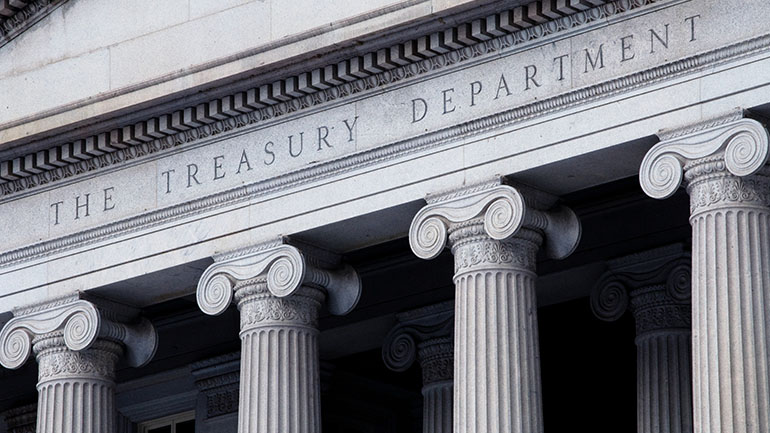Strong Start to 2025 for Canada, While the U.S. Continues to Send Shock Waves
By: Robert Both, Andrew Kelvin, Chris Whelan, Oscar Munoz, Gennadiy Goldberg, Jan Nevruzi, Molly Brooks (McGown)
Apr. 15, 2025 - 3 minutes 30 seconds
Overview:
- We believe the Bank of Canada (BoC) is more likely to leave the overnight rate unchanged at 2.75% in April and still think the BoC will need to cut three more times this year.
- President Trump's "Liberation Day" tariff announcement proved to be more aggressive than we anticipated, so we are now revising our inflation outlook, reducing our GDP growth forecasts and assign 50% odds to a recessionary outcome for the U.S. economy.
- We are bringing forward our forecast for the FOMC's first rate cut to June and now project the Committee will ease rates at each meeting through May 2026.
Canadian Economic Outlook
The Canadian economy entered 2025 firing on all cylinders with industry-level GDP for January rising by 0.4% month on month to exceed expectations (TD and market) for a 0.3% gain, on the heels of upward revisions to December (0.3% from 0.2%). Details were largely upbeat with broad strength across goods driving the headline print, though new flash estimates for a flat print in February did bring some balance to the report; it should be noted that these were widely expected to come under pressure amid the recent spike in uncertainty.
The print leaves Q1 GDP tracking near a 2% annual rate, even with growth expected to stall in February and come under more pressure in March. That would match BoC projections from the January Monetary Policy Report, even though those forecasts did not incorporate recent escalations in global trade tensions.
The strong print for January and lack of appreciable damage to the economy in February tilt the odds decisively towards a pause from the Bank of Canada in April. The Bank has recently argued that given extreme uncertainty, it may need to act more cautiously, functionally putting less weight on forward-looking forecasts and more weight on the data in hand. With that sort of a bias, we believe the Bank of Canada is more likely to leave the overnight rate unchanged at 2.75% in April.
Tariff uncertainty may well turn the market on its head once again, but at this point the economic data in Q1 has been too strong for us to ignore. Importantly though, this is pain delayed, not pain averted. We still think the BoC will need to cut three more times this year. We now look for 25bp cuts in June, July, and September.
U.S. Economic Outlook
President Trump's "Liberation Day" tariff announcement proved to be more aggressive than we were anticipating. The policy decision roughly represents a 20pp jolt to the effective tariff rate for U.S. imports; a move that has no precedent in the post-war era. This constitutes a significant shock to what was our already less-constructive outlook for the U.S. economy this year.
As a result, we are revising our inflation projections over the next year significantly higher while also reducing our GDP growth forecasts. We now expect the unemployment rate to rise to 4.8% by year-end and assign 50% odds to a recessionary outcome for the U.S. economy.
While this would create an even more challenging macro landscape for Fed officials, we continue to expect growth/labor-market dynamics to dominate the policy response over the sizable move higher in inflation.
We are bringing forward our forecast for the FOMC's first rate cut to June from July and now project the Committee will ease rates at each meeting through May 2026, bringing the policy rate sharply lower to a more accommodative 2.25%-2.50% level.
We acknowledge significant risks to this view as policy uncertainty remains high and government decisions remain fluid. With other macroeconomic paths certainly possible, our forecasts could similarly evolve over time.
Trade Uncertainty Has Rocketed Higher Following President Trump's Reelection and Further on Tariff Plans
Subscribing clients can read our full reports via the TD One Portal



















